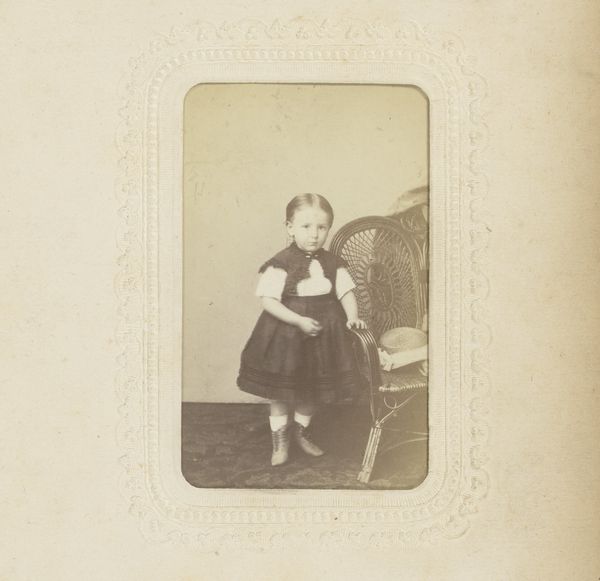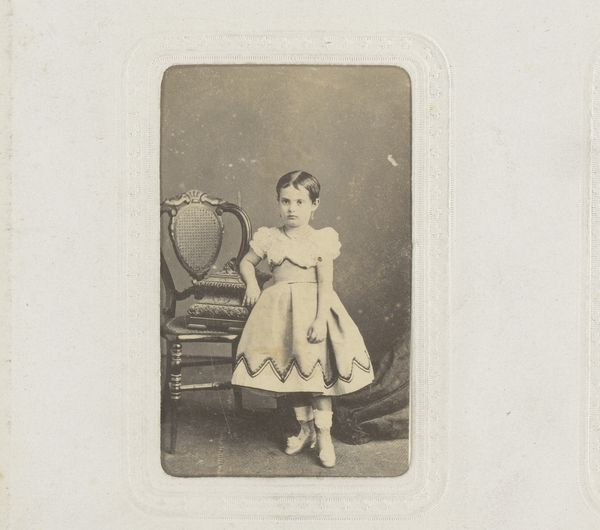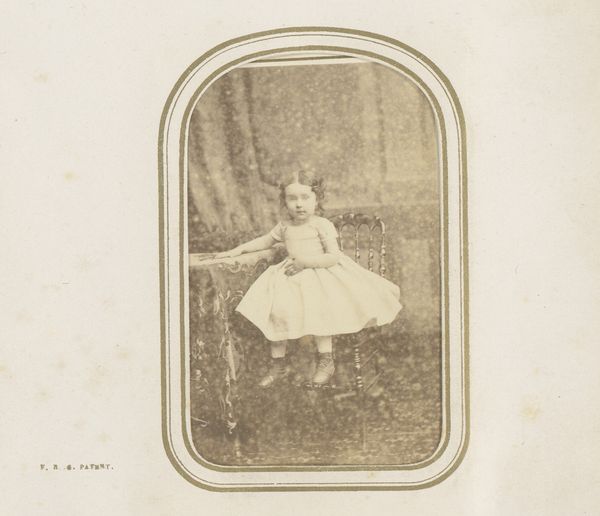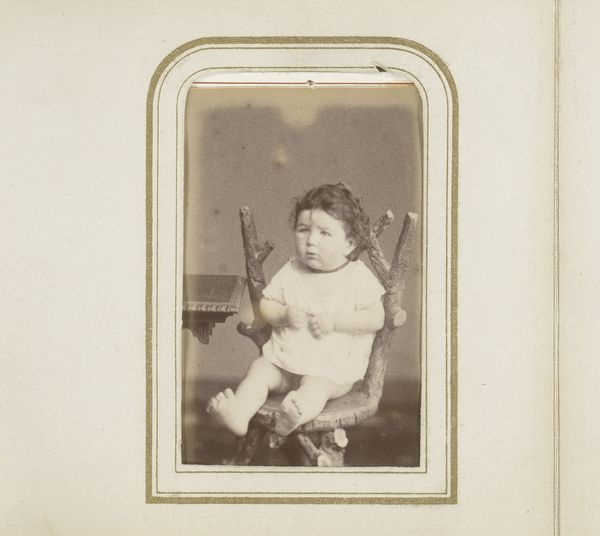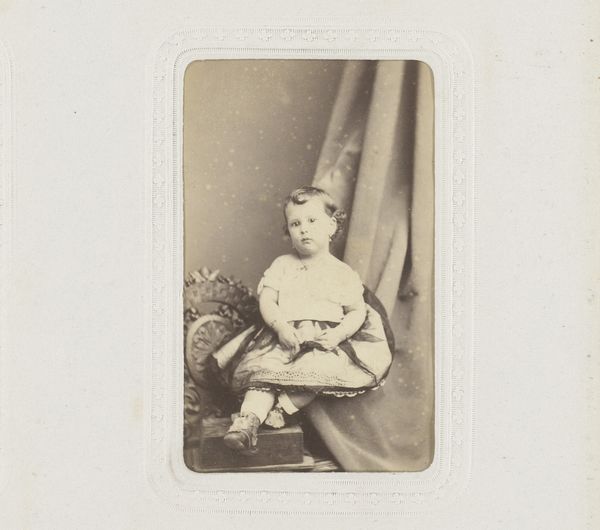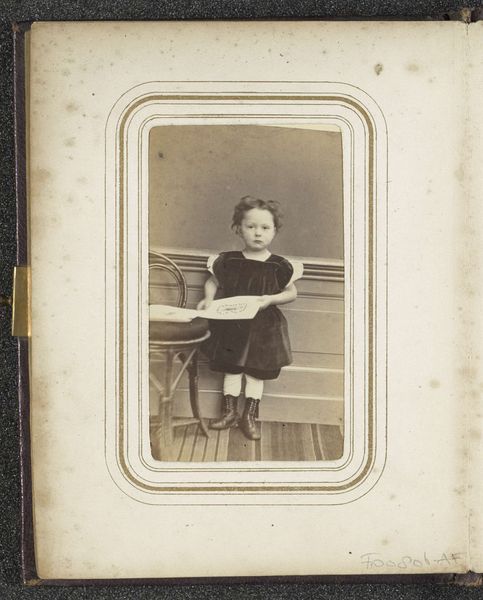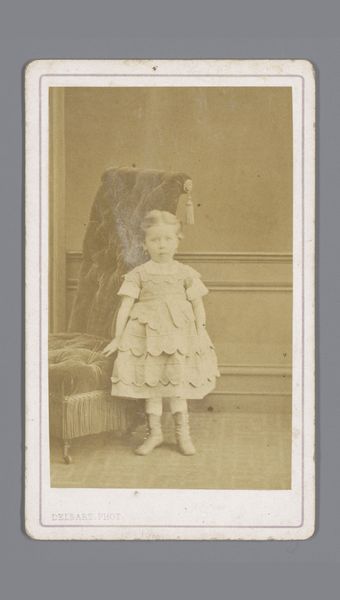
photography
#
portrait
#
16_19th-century
#
photography
#
historical photography
#
19th century
Dimensions: height 86 mm, width 52 mm
Copyright: Rijks Museum: Open Domain
Curator: What we have here is "Portret van een meisje, staand bij een stoel," or "Portrait of a girl, standing by a chair," a photographic portrait by Francisco e hijo Rojo, created sometime between 1860 and 1890. Editor: The sepia tones immediately give it a nostalgic air. It has a certain quiet dignity, doesn't it? The girl's pose, the muted light—it all contributes to this very contained and formal feeling. Curator: Indeed. The formality speaks to the conventions of portraiture at the time. Photography was still a relatively novel medium, and photographic portraits often mimicked the compositional styles of painting. Editor: Precisely. Note how the composition directs our gaze—the placement of the chair acts as a visual anchor. But what social role did these kinds of images fulfill? Were they accessible to everyone? Curator: Access was certainly stratified. Studio portraits were initially expensive, positioning them as signifiers of middle-class status, even aspiration. These portraits helped solidify the family's image. Editor: The girl’s dress also draws my attention, the puffed sleeves, the multiple stripes around her legs. So much detail, so meticulously rendered. What statements do you think those details were intended to express? Curator: The attire reflects both the child’s age and societal expectations for girls at the time—demure, tidy, but not overly flamboyant. Even the hair ornament looks deliberate. I agree with you about the rendering—this demonstrates careful lighting. Editor: When I view the portrait within its time period, I see a cultural moment captured. These photographs provided both the subjects and their communities ways of constructing narratives. What does this photograph communicate about the construction of gender and class? Curator: An excellent question. The averted gaze might suggest an almost archetypal presentation of childhood. We’re presented a representation steeped in expectation, one where social roles and decorum are highly prized. Editor: Thank you. Reflecting on the history interwoven in its presentation makes me reconsider the emotionality that permeates the subject's appearance, deepening my emotional appreciation of the artist's intentions. Curator: Yes. Considering both the stylistic aspects and their historic origins invites a deeper understanding that broadens the conversation beyond pure aesthetics, adding to our shared cultural consciousness.
Comments
No comments
Be the first to comment and join the conversation on the ultimate creative platform.


